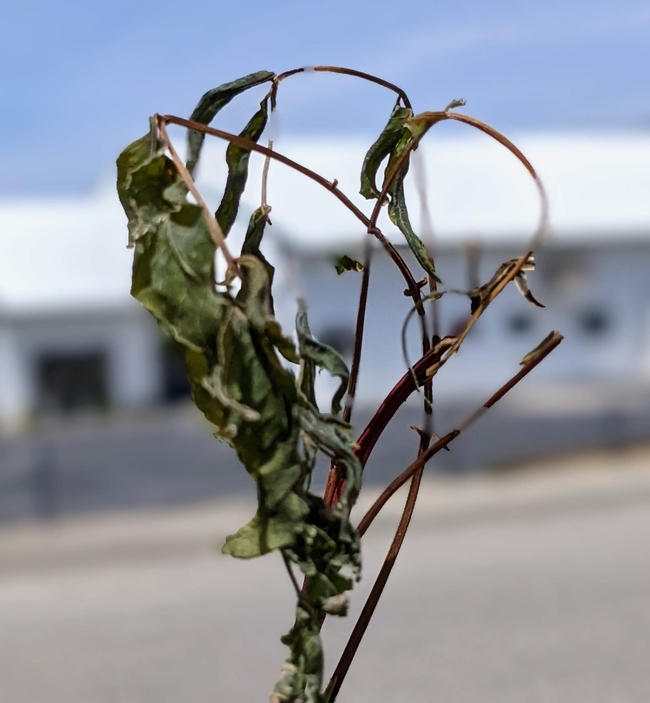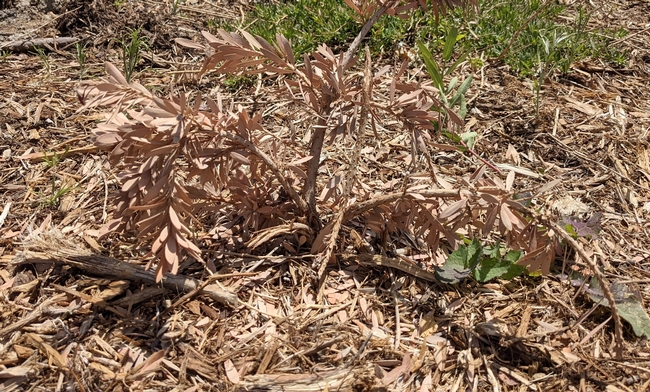Recently the Eastern Sierra had some hard freezes that damaged plants. It's not that unusual for it to happen, but no one likes to see zapped foliage.
Let's start with the important thing first: your trees and shrubs will be fine!
When plants are dormant, they are prepared to take cold weather, but as growth begins moisture conditions inside the cells return to normal, fully hydrated state. Late freezes then turn cells into tiny ice cubes, killing them. That damage is usually visible once temperatures get above freezing the next day. Shoot tips and/or leaves will look wilted and sometimes darkened. Sometimes thin bark can be affected.
Hardy perennials, things like landscape shrubs, shade trees, and fruits may be damaged. How much damage is a function of the species, temperature, and how long the cold lasts. Generally speaking, these will recover fully. Growth this year may be reduced and fruit buds may be killed, but the plants will live.
Seeing all that dead foliage can be depressing, but the best thing to do in the short-term is nothing. Sometimes branches that look like goners are only mostly dead. Later they will resume growth. I suggest waiting until late June to see what will happen. At that point feel free to remove any dead parts. If you cut prematurely, you may be pruning living branches for no reason in places that you really shouldn't be cutting if you don't have to.
Now, if you have plants that didn't survive the winter—in other words never greened up at all—that is a different issue. In the picture below callistemon was planted in Bishop where it is not cold hardy. Winter killed these plants, not a late freeze. If they were growing in a place like Santa Clarita and they experienced a late frost, they would probably be alive but damaged.
More challenging is deciding what to do with vegetables. Warm-season plants like tomatoes, squash, and peppers frozen to the ground should be immediately removed and tossed into the compost pile. If only a little bit of the plant is frozen (it sometimes happens) you can prune that part off. If the plant is small, you may be better off replanting than waiting for recovery. Most of highly sensitive vegetables haven't yet been planted.
Cool-season plants are usually okay, especially root crops. A little frost won't hurt them. Some freezes may be bad enough that you might want to harvest them. It's nearing harvest time for some of those already. It's really a judgment call with no exact answer. Feel free to email the Master Gardener helpline if you want advice. (immg@ucanr.edu)
Of course the best thing to do is avoid frosts altogether! Proper soil temperatures for planting usually occur during our long frost season. Using walls-of-water or row covers should be a normal practice. A good rule of thumb in Owens Valley is that if the daytime high doesn't reach 72°F expect a frost on a clear night. And watch the forecast for storms.
Local wisdom of waiting until White Mountain Peak is clear of snow is not a reliable method to avoid frost.


